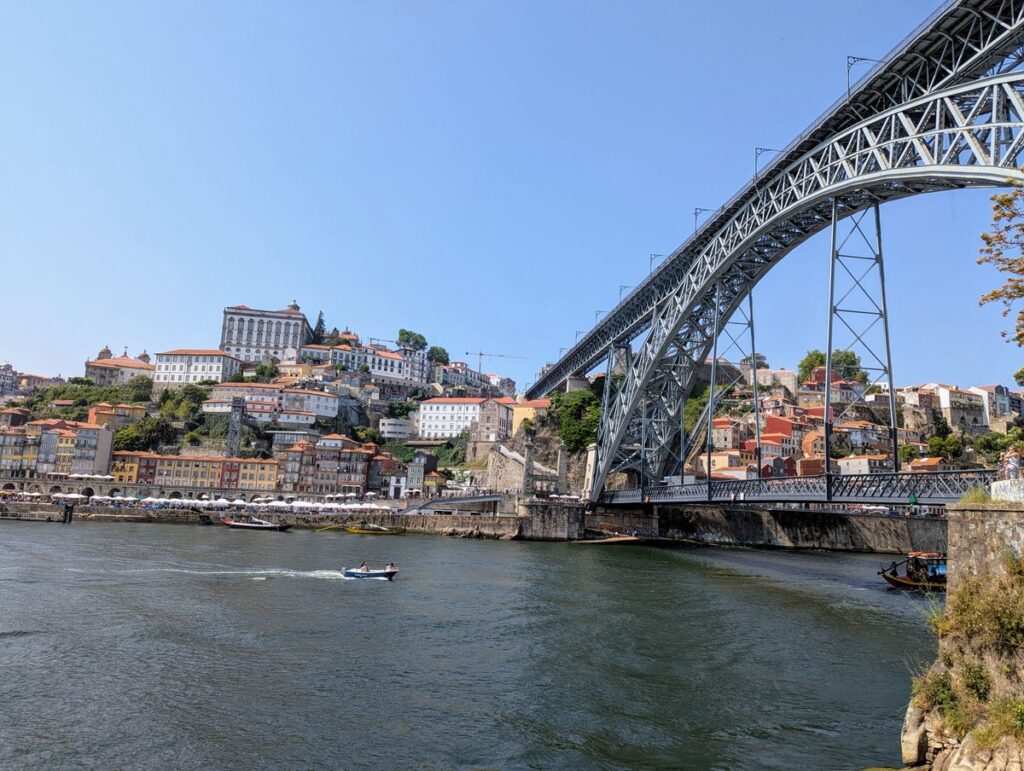
National Geographic Expeditions gives travelers a taste of Portugal with its newest itinerary.
This unforgettable adventure immerses visitors into the many highlights of Portugal – including the famous Azores – all while taking the guesswork out of the planning.
Guests only have to sit back and absorb all the wonders of this fantastic destination.
Multi-City Destinations
Packing so many points of interest into one itinerary is no small feat. National Geographic has created a land tour that blends everything together seamlessly.
First landing in Porto, it is recommended to get on-site a day early because you really do hit the ground running. And with the current state of the airline industry, you don’t want to miss anything due to a delayed or cancelled flight.
From here, guests travel to the picturesque Douro Valley and then on to Lisbon via motorcoach. After a few days in Lisbon, an early morning flight takes guests to São Miguel island in the Azores.
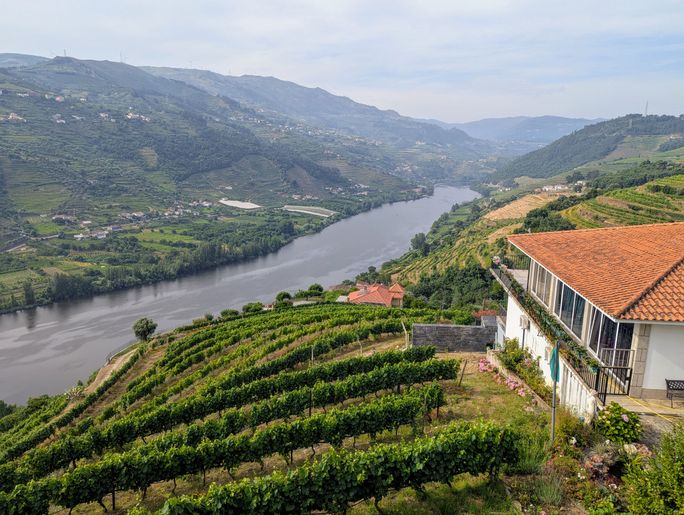
Portugal’s Duoro Valley (Photo Credit: Lauren Bowman)
Five-Star Hotel Accommodations
So what makes National Geographic stand out for a land tour? The attention to detail. This experience is best suited for active travelers who want to learn and see a lot, all while having that touch of luxury. Guests are greeted each night with five-star accommodations. The Hospes Infante Sagres Porto is a 1950s building reminiscent of a large manor estate but with all the modern amenities. Opening as a hotel in 1951, the building set the standard for what elegance and opulence meant as the city’s first five-star hotel.
In the Duoro Valley, expeditioners stay at the modern Quinta da Pacheca winery. Nestled among the terraced vineyards, you feel as though you’re in your own luxe wellness retreat. There’s some downtime for guests and plenty of spa treatments to choose from. The one constant complaint was that there simply was not enough time at this location, so don’t be surprised if future itineraries offer a two-night experience here.
The Olissippo Lapa Palace Hotel in Lisbon is a chateau-like resort with views of the Tagus River. With gardens, a large swimming pool and multiple eateries, it’s easy to forget that the city of Lisbon lies sprawled around you. After a full day of outings, it’s a relaxing reprieve to come home to.
On Sao Miguel island in the Azores, Octant Ponta Delgada welcomes guests with impressive views of the local marina, comfortable rooms, a rooftop veranda with a pool area, and delicious restaurants for when you simply don’t want to walk anymore.
The five-star experience isn’t just with the accommodations, though. It’s also in the more trivial matters like baggage. It’s easy to pack for this 10-day itinerary in a large suitcase and carry-on, but then you have to worry about lugging everything between cities – except National Geographic takes care of this for you, too. Each night before a departure, guests are told what time to have their suitcase outside their room. Then their bags are picked up and delivered to not only the next hotel, but the guest’s next hotel room upon arrival.
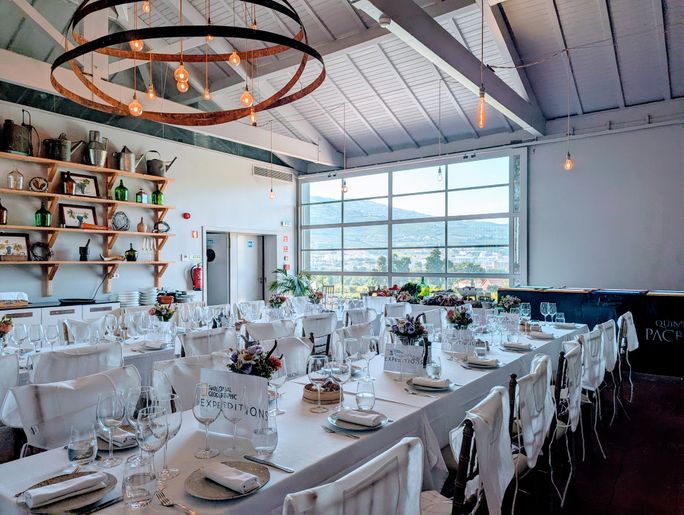
National Geographic Expedition in Duoro Valley, Portugal (Photo Credit: Lauren Bowman)
Comfortable Transfers
Getting to and from each of these key destinations, as well as daily excursions, is no small logistical feat. Comfortable motorcoaches are the main source of transportation. Trips are broken up with no ride lasting more than two hours, whether it’s a stop at a scenic overlook for your first sighting of the Douro Valley or simply a roadside restaurant with clean restrooms and superb cappuccinos. The drive from the Douro Valley to Lisbon is a longer trip, but it is broken up with a stop in Tomar – famous for its history with the Knights Templar. After lunching in the picturesque cafe-style village, the group ventures through the UNESCO Heritage Site, the Convent of Christ, to learn about its extensive history.
Through the cities of Porto and Lisbon, guests are split up into smaller groups to ride on tuk-tuks while receiving an informative tour of iconic landmarks. Not only did these vehicles make it easier to get from point A to point B, but it was a fun way to see more of these fascinating cities.
The most impressive transfer was watching the guides handle the maneuvering of almost thirty people through the Lisbon airport. From arranging check-in and baggage drop to corralling everyone through security and making it to our plane with plenty of time to stop for snacks, it was one of the least stressful airport experiences.
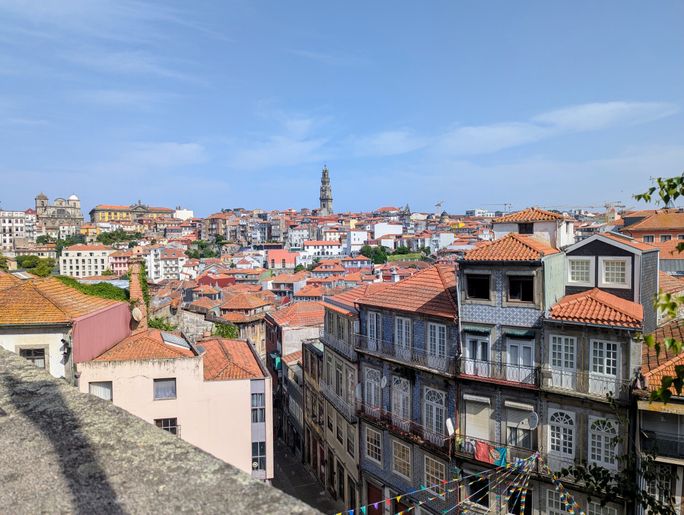
Porto, Portugal (Photo Credit: Lauren Bowman)
Daily Excursions with Local Guides
This is definitely a trip for active travelers. Early mornings and extensive walking tours require expeditioners to be in moderate shape. And like most European cities, many towns are littered with cobblestone streets or historic buildings that do not meet ADA requirements. Porto and Lisbon are both known for their hills, and getting from one sight to another will often require a nice leg workout. But the rewards are undoubtedly there – from the beautiful scenery to the delicious food – you’ll be glad you made the journey.
Traveling with National Geographic also means you’ll get a premier tour of certain landmarks like at the Livraria Lello – also known as the prettiest bookshop in the world. Guests bypass the queues of other visitors for a truly private tour of the space before the official opening, thus giving guests those coveted pictures without lots of other tourists in the background or even having to wait in line.
And even though these exclusive tours couldn’t take place at every single tourist spot, at no point during the journey were guests made to wait in the ticketing queues, which sometimes had very long wait times. Instead, everything was timed perfectly, with museum entries a breeze through the checkpoint.
Another unique experience on this tour is the whale watching on Sao Miguel island. Not only was the whale watching experience itself mesmerizing, but guests also get a detailed history of whaling and how the relationship with whales has evolved over the years. “It blew my mind that they’re still using the oldest technique of spotting whales. So they’ll have people actually planted on the coast with really heavy-duty binoculars, checking out where all the whales are, and they can identify. What type of whale it is just by, um, looking at them from many, many kilometers away and they’re talking to the boats and telling them where to go and directing folks so you can see as many dolphins and whale species as possible on these cruises. So that was really surprising to me. They’re not using any technology at all.” says Kristen Roach, a guest traveler from Winston-Salem, North Carolina.
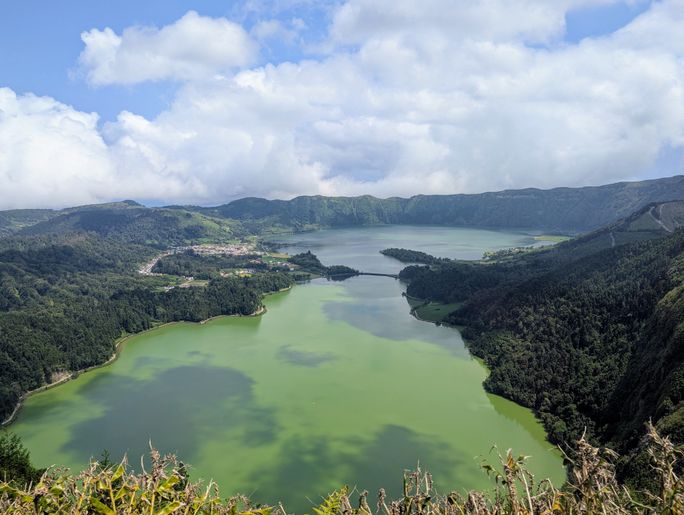
Sao Miguel, Azores, Portugal (Photo Credit: Lauren Bowman)
Field Experts
Throughout the trip, an Expedition Leader guides visitors through each place of interest with whisper boxes. Not only is the Expedition Leader extremely knowledgeable, but they’re there to help with any specific needs guests may have as well, like helping to find a local pharmacy for sunscreen. Throughout the trip, local guides join the tour to help manage the size of the group as well as give a more in-depth local account of the area. However, having that main Expedition Leader as a point of contact throughout the entirety of the trip allows travelers to form a more comfortable relationship for asking questions.
Also, part of every itinerary is a National Geographic Expert whose field of knowledge is somehow relevant to the program. During our tour at the beginning of June, attendees were lucky enough to be joined by Arianna Soldati, volcanist and Assistant Professor at North Carolina State University. During the course of the journey, Arianna gave three lectures about what guests would experience from the geological to the historical events of the areas. She joined in the daily tours and readily answered questions. It was also a treat to see her get so excited when seeing the volcanic activity on Sao Miguel – her enthusiasm rippled through the group.
“When you take a tour with National Geographic, you really get to focus on exploring the destination, and having an expert such as me on the team is a fantastic way to really dive deep into an aspect that maybe you wouldn’t have thought about otherwise,” Soldati said. “Each expedition is different. So, for example, I talk a lot about geology and volcanoes, but you know, another group on the same tour might get an explorer and an expert who focuses on marine biology or botany. So really guests get to choose whatever their main focus is and personalize the tour, or rather choose the one that really best fits their interests.”
Plenty of Time to Relax
This is no doubt a whirlwind, once-in-a-lifetime type of trip with so much packed into each day. But National Geographic has also planned ample time for self-exploration of these cities and downtime.
This allows guests to choose what best interests them while also giving them the chance to simply relax when needed. And by staying at such luxury accommodations, it’s easy to find quiet places to take in everything this magnificent itinerary has to offer.
For the latest travel news, updates and deals, subscribe to the daily TravelPulse newsletter.

